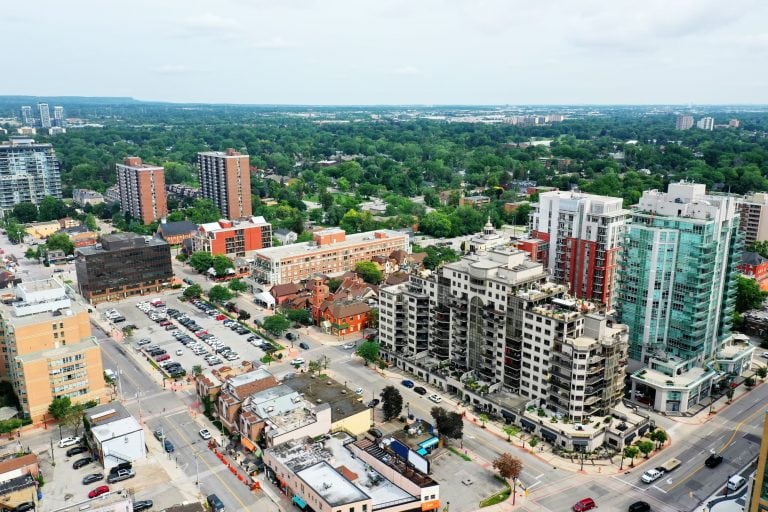Buying a home is buying a home, right? You may think that no matter where you are it’s practically the same process, but each city, state, and country has its own rules for home-buying. As similar as many things in Canada and the US are, there are many differences when it comes to homeownership. Keep reading to discover some of those differences, so you are prepared to buy a home no matter where it is.
Access to Data
US Real Estate Data
One of the key differences in buying a home in the USA vs Canada is that the United States provides more real estate data than Canada does. In the USA, you can find information about recent home sales, prices, and even neighbourhood trends on various internet databases. This kind of access to information makes it easier for homebuyers to do their research and make choices whether they are working with a Realtor or not.
Canadian Real Estate Data
There is no national database in Canada that provides this same level of detail. Instead, you have to rely on local real estate boards or agents to give you this information. This can be a bit frustrating if you’re trying to do your research from afar, and it also makes it more challenging to compare different neighbourhoods or cities. The best way to remedy this is by working with a trusted, local Canadian real estate agent when buying your home. An agent will be able to provide you with market trends and neighbourhood information for the exact locations you’re looking at, putting you in the best position to buy.
Down Payment
One of the biggest differences between buying a home in Canada and buying a home in the USA is the down payment requirements. In most cases, to buy a home in Canada, you will need to come up with at least 5-10% of the purchase price as a down payment. Your minimum down payment depends on the price of the home you are buying; here is the breakdown:
Canadian Down Payment Requirements:
- Home price of $500,000 or less: 5% minimum down
- Home price of $500,000 – $999,999: 10% minimum down
- Home price of $1M or more: 20% minimum down
With real estate prices in soaring in Ontario, Alberta and British Columbia would be home owners are forced to save up over 20%!
US Down Payment Requirements
However, in the USA, you can buy a home with as little as 3% down, depending on which mortgage loans you are aiming for. This is a major benefit for American homebuyers, as it allows them to get into their dream home without having to save up for years. Conventional loans typically require a minimum down payment of 3%, and an FHA (Federal Housing Administration) loan typically requires 3.5% down.
On average, homebuyers in the US put down 6% when purchasing a home. We know what you’re thinking: that seems low! There is a myth in the US that you’ll need 20% down to buy a home, which comes from the requirement for Private Mortgage Insurance. In reality, you have many more loan and down payment options for purchasing a home. Take a breath, first-time homebuyers; you have options!
Mortgage Options
Canadian Mortgage Options
Homebuyers’ options for mortgages greatly differ in Canada and the U.S. In Canada, the mortgage amortization periods are usually 25 years, with few options for 30-year amortizations. Within those amortization periods, there are terms in which Canadians need to renegotiate the logistics and interest rate of their mortgage. These terms can be as short as six months or as long as 10 years. With that said, the interest rates on your mortgage vary greatly from term to term. A 10-year term is usually much higher than a 5-year term and so forth.
US Mortgage Options
On the other hand, home buyers in the U.S. typically have amortization periods of 30+ years. However, the United States makes it possible to set the terms of your mortgage and leave them that way until it’s paid off. That’s right; if you want to pay the same rate on your mortgage for 25-30 years, you can do that! When it comes to interest rates, they stay in the same range regardless of how long your mortgage term is.
It’s worth noting that while it’s much easier and often more affordable to buy a home in the US, the banking systems in Canada never collapsed.
First-Time Buyer Incentives
This is a crucial difference between buying a home in Canada vs the United States. Canada offers a nationwide First-Time Home Buyer Incentive, whereas the U.S. doesn’t. The Government of Canada provides the First-Time Home Buyer Incentive that offers novice homebuyers 5-10% of the home’s purchase price to go toward the down payment. This makes homeownership more affordable and more reachable for younger generations, as it helps to cover down payments and lowers mortgage costs. There are a few criteria you’ll have to meet in order to qualify for the incentive, including:
- Total income equals $120,000 or less ($150,000 or less if the home is in Toronto, Victoria, or Vancouver)
- Total borrowing is no more than 4X your qualifying income (4.5X if the home is in Toronto, Victoria, or Vancouver)
- Must be a first-time homebuyer
- Must be a Canadian citizen, permanent resident, or non-permanent resident authorized to work in Canada
- You meet the minimum down payment requirements with traditional funds
Getting first-time homebuyer assistance in the U.S. is possible, but it can be a bit more tricky. Many states provide options for first-time homebuyer grants or loans, but the terms differ from state to state. In fact, if you talk to US real estate agents, you’ll quickly find out that “first time homebuyer programs” are a myth. Many states offer incentives aimed at first-time home buyers but don’t require the buyer to be an actual first-time home buyer.
Closing Time
Another critical difference between the USA and Canada real estate is the total time it takes to close on your new home. In Canada, closing on a house typically lasts two to four weeks. Most of this time is spent waiting on your final loan approval, but once you have that, you’re golden. However, it can take between 30 to 60 days to close on a home in the U.S depending on the state. For example, it could take as much as 6 months to close on a home in California, while a home in Georgia might only take 30 days. Similar to the Canadian timeline, most of this time is waiting on your mortgage loans to get approved.
Buying a Home: USA vs Canada
In conclusion, there are many differences between buying a home in Canada and the USA. The rules around buying a home in the USA and Canada can change at any time, so be sure to consult with an experienced real estate agent before making your decision.













